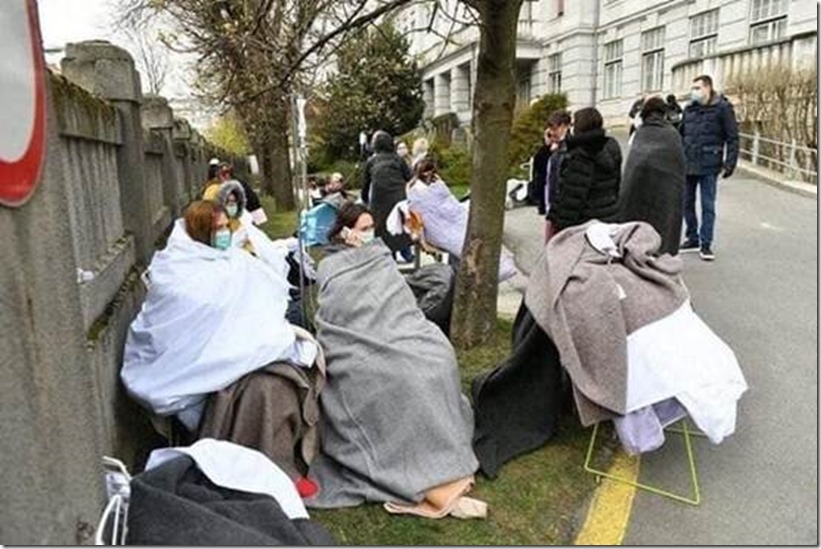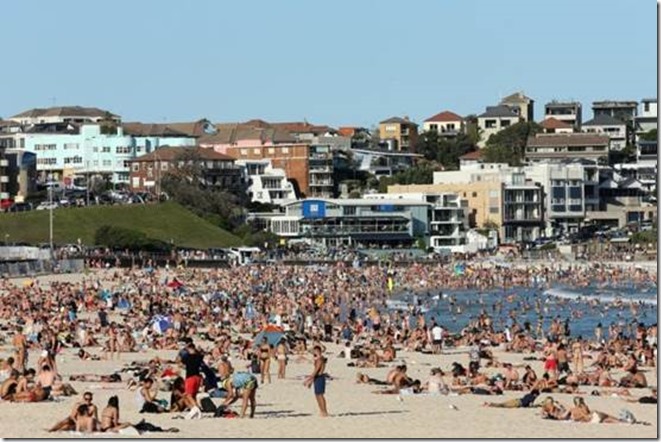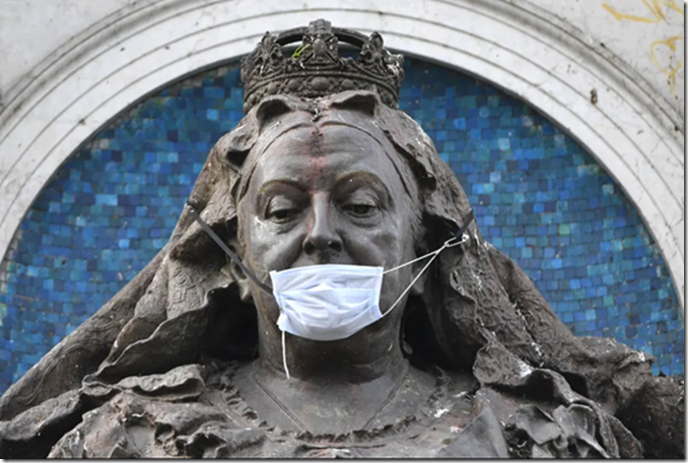What can we learn from the semiotics of the Coronavirus crisis?
Semiotics is the study of signs and symbol systems and how they emerge from and penetrate the human unconscious. Semiosis is the study of how these symbols systems/myths create meaning and their significance for human being/living. The way we symbolize what is significant to us says much about how we create meaning and understanding in what we experience. What is most powerful in semiotics is the way symbols, signs, icons and graphics penetrate the unconscious. So, for the purpose of this discussion let’s explore some of the common symbols being presented us so far through this crisis.
The Corona Microbe
As an interesting study it is worth exploring the common symbols used to depict the COVID-19 crisis particularly as this virus can’t be seen. A simple exploration of media pages and Google images shows that the most common symbol for COVID-19 is the microscopic virus cell itself. This microscopic cell has now become the backdrop for most news reports.
Semantically, Covid-19 it is also being referred to as the ‘invisible enemy’ (https://www.economist.com/podcasts/2020/03/20/the-invisible-enemy-is-america-prepared-for-covid-19). What is also invisible is the way these semiotics operate on the unconscious and collective unconscious (Jung). Lotman called the collective unconscious ‘the semiosphere’ (https://monoskop.org/images/5/5e/Lotman_Yuri_M_Universe_of_the_Mind_A_Semiotic_Theory_of_Culture_1990.pdf ). If we don’t include an understanding of the semiosphere in the way we define culture then we will remain seduced into thinking culture is a system of behaviours.
People and the Health System
The second common symbol of the COVID-19 crisis is health workers dressed in PPE: gowns, masks, gloves, beds, wards and face shields and crowded overloaded health facilities. Often the context/location for these images is a hospital or field hospital with the messages that conveys the pressure the crisis places on the health system.
Graphs and Statistics
The third set of images is graphs, maps and statistics showing the spread and nature of the crisis and the now common reference to ‘flattening the curve’ (https://www.wired.com/story/the-promising-math-behind-flattening-the-curve/ ). An unfortunate by-product particularly of the semiotics of statistics and graphs is that they desensitize humans to suffering (https://www.researchgate.net/publication/283318445_The_More_Who_Die_the_Less_We_Care_Psychic_Numbing_and_Genocide ). This is why one of the bizarre dynamics of the risk and safety industry is a lack of care.
Spacial Intelligence
The fourth semiotic is that of space, showing social distancing and indeed, those who have not practiced it. The Bondi Beach example (https://www.theguardian.com/world/2020/mar/22/quiet-with-some-defiance-as-bondi-beach-succumbs-to-coronavirus-closure) is now well known. Similarly, deserted streets and cafes have also become symbols for COVID-19.
Death
The fifth symbol of COVID-19 is the gruesome image of morgues or makeshift morgue (https://www.businessinsider.com.au/coronavirus-covid-19-deaths-bodies-morgue-storage-capacity-maxed-out-2020-3?r=US&IR=T). In Spain where the crisis is acute Ice Hockey rinks and refrigeration trucks are being used (https://edition.cnn.com/2020/03/24/europe/spain-ice-rink-morgue-coronavirus-intl/index.html).
The Face Mask
The final semiotic for discussion is perhaps the most pronounced symbol of the coronavirus – the face mask. The covering of the human face is perhaps one of the most profound social distancing measures we could invoke: it limits communication, reading facial expressions, responding to smiles and like all masks can hide what it is to be human. The social harm this causes has been symbolized by the masking of statues (https://www.theguardian.com/world/gallery/2020/apr/03/masked-statues-around-the-world-in-pictures?CMP=Share_iOSApp_Other). In many ways masking serves as the silent icon for this crisis.
Why is Semiotic Awareness Significant?
Our perception is profoundly conditioned by what we see and what is shown to us (https://edition.cnn.com/2020/03/19/world/gallery/novel-coronavirus-outbreak/index.html). How we absorb hidden unconscious messages through semiotics is critical to understanding the amplification and attenuation of risk.
We know from studies in The Social Psychology of Risk (SPoR) and the work of Pidgeon, Kasperson and Slovic (2003) in The Social Amplification of Risk (SARF) that all risk is Amplified or Attenuated (https://cllr.com.au/product/social-amplification-risk-unit-8/) by the way risk is presented and perceived. The mechanics of SARF has been presented in the SARF Model (below). Through a study of this model one can see how various ‘channels’ of inputs work together to socially to amplify or attenuate risk.
Unfortunately, the model is quite mechanical and omits critical aspects of amplification such as ‘pre-amplification’. What the model does not include is any discussion of such as pre-amplification, semiotics, the semiosphere or the notion of the collective unconscious, even though it is embedded in the model through assumption, transition and suggestion (eg. each arrow). However, for the purposes of this discussion an awareness of this model will do. In studies of amplification in SPoR we have developed this model to include missing critical aspects of the semiosphere.
The SARF Model
When we consider how risk is amplified or attenuated we ought to include a consideration of how social dynamics work invisibly through semiotics on the collective unconscious. Such a consideration helps one understand how risk is attributed but also how certain semiotics misdirect us away from Real Risk (https://www.humandymensions.com/product/real-risk/). It is because semiotics operate unconsciously that people ‘fall’ for misdirection, propaganda, conspiracy theories and vested interests hidden in semiotic narratives about Covid-19. (I have deliberately resisted the inclusion of toilet paper in this list and have written about the psychology of hoarding previously – https://safetyrisk.net/hoarding-as-a-psychosis-against-uncertainty/)
Conclusion
One of the important lessons learned from a study of semiotic influence on the unconscious is the affect on children. The power of semiotics to influence children is often ignored and underestimated because we are not semiotically aware. Unfortunately the culture of the safety industry (as evidenced by the AIHS BoK and WHS Curriculum) tends to think that learning is cognitive, rational and disembodied – the opposite is the case. Most people are not aware of the significance of semiotic influence and rarely ask the question: What are these images doing to me?
If we wish to better understand Real Risk, then Safety needs to start by asking this question.

















bernardcorden says
Not with a bang but a whimper: TS Eliot – The Hollow Men
https://allpoetry.com/The-Hollow-Men
https://www.theguardian.com/world/2020/mar/23/life-after-lockdown-has-china-really-beaten-coronavirus
Rob Long says
TS Elliot indeed. I think we might get much more from Prufrock about understanding the semiotics of risk than a hundred BoKs.
bernardcorden says
The following links provide access to the response of the USS Reagan following the Tohoku tsunami and Fukushima meltdown:
https://www.rt.com/usa/uss-reagan-fukushima-radiation-979/
https://apjjf.org/2014/12/20/Kyle-Cleveland/4116/article.html
bernardcorden says
It would also be interesting to count the number of times the terms uncharted waters or unprecedented have been used at federal and state parliament media conferences
John Culvenor says
Good set out of how the story is being told visually.
Rob Long says
Thanks John. Thinking semiotically is such a critical skill to foster for all safety people.